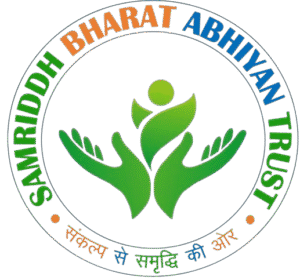GENISIS
Samriddh Gramya Abhiyan Society (SGA Society) was established on 21st January 1991 (in the name and style of Lupin Human Welfare & Research Foundation Samiti, which was later rechristened to Samriddh Gramya Abhiyan Society on 03-11-2023). The objectives of the organization are to create replicable development model before the nation – the model that involves growth, inclusion and sustainability. The model will be human centric and creates a prosperity in the district to make it Atma Nirbhar (self-reliant) and also the people to be AtmaNirbhar. In nutshell, this district development model is meant to create and make a district poverty free, unemployment free, farmers who are empowered, and empowered women.
SGA Society has incorporated knowledge and adoption of technology to boost rural prosperity. It aims at transferring technology, which are available in various research institutes of the country to the unemployed youth, women and farmers enabling them to enhance their capability and capacity to bring a change in the economic condition. The organization is also aiming at including and sharing locally available resources for raising their living of standards that too with dignity.
SGA society is headquartered at Krishna Nagar, Bharatpur and working currently in 09districtsofRajasthanState.
VISION
To create a sustainable, replicable and ever-evolving model of rural development by empowering underprivileged and marginalized sections of society through grassroot innovation, basic infrastructure and balanced ecological balance.
MISSION
To act as a catalyst in building a prosperous and vibrant Atma Nirbhar Bharat by increasing rural GDP through localized innovation and technology adoption.
GOVERNING BOARD
The Board of Trustees of the Society is constituted with experienced bureaucrats, who are expertise and have contributed immensely to the development sector
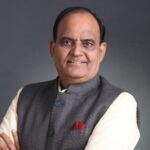
Sita Ram Gupta
Secretary
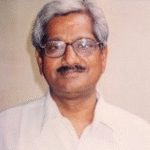
Devendra Nath Gupta
President

Krishan Kumar Agarwal
Vice President
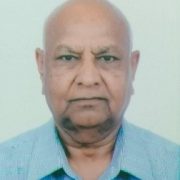
Hemraj Goyal
Treasurer
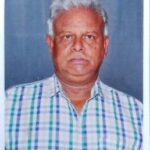
Meghraj
Member
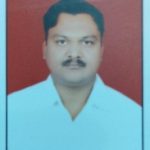
Vijay Goyal
Member

Ankur Khandelwal
Member
ONGOING PROJECTS/PROGRAMMES
FINANCIAL INCLUSION (FI)
Financial Inclusion Project is an availability and equality of opportunities to access financial services. The organization is working with State Bank of India in eight districts, namely; Bharatpur, Dholpur, Karauli, Alwar, Dausa, Sawai Madhopur, Jaipur and Jodhpur. The annual average transaction under this project is Rs. 280 crores, in which more than 3.44 lakhs new bank accounts have been opened and approximately 29,000 families from 761 villages were included in this project. In this project 120 CSP are working on the process by which individuals and businesses can access appropriate, affordable and timely financial product and services.
Along with our F.I. Program, we have also carried out social work from the monetary resources of service charge given to us as well from donors, who deeply repose faith in us.
Since we are social animals, it is our bounden duty to do such humble work to the society. Such works not only serve the needy but also encourage others to do something worthwhile for the society. The Government and other institutions cannot do micro works and, in our opinion, it is left out for NGOs/ Voluntary organizations to fill up such gaps.
Financial services in our opinion are not just about money or just about giving loans to the poor. They are really about building assets to secure lives and livelihoods.
Finally, we learn that the timely help can result for rehabilitation and empowerment of needy and also sets an example of compassion and hope.
INTEGRATED CHILD DEVELOPMENT PROGRAMME (ICDS): A RECOGNITION OF DIFFERENCE BY STATE GOVERNMENT
ICDS Project at Kumher
We are spearheading the prestigious ICDS (Integrated Child Development Services) project in collaboration with the Government of Rajasthan, aiming to transform the entire Kumher block into a malnutrition-free zone.
As the sole NGO overseeing an ICDS project among 363 ICDS projects in Rajasthan, we’ve been entrusted by the government due to our organization’s commitment and capability.
Covering the entirety of Kumher block, including two tehsils and a subdivision, our project encompasses 120 villages and the municipal area, reaching a rural population of 2.0 lacs and an urban population of 0.30 lacs.
With 192 Anganwadi centres in operation, staffed by 384 workers and helpers, and monitored by seven dedicated supervisors, each overseeing 25 to 30 centres, our project ensures comprehensive coverage and support.
Our objectives within the ICDS framework include enhancing the nutritional and health status of children aged 0-6 years, fostering holistic child development, and mitigating mortality, morbidity, malnutrition, and school dropout rates.
Our service package encompasses supplementary nutrition, health and nutrition check-ups, immunization, non-formal education for preschoolers, health and nutrition education, and referral services, ensuring a comprehensive approach to child development.
In addition to the standard package, we provide tailored support to Anganwadi centres and beneficiaries, striving to establish a model project that sets a benchmark for excellence, besides persuading the mothers to grow nutri-gardens in their backyard.
ECONOMIC DEVELOPMENT PROGRAMMES
Economic Development enables rural poor to break vicious cycles of debt, poverty and backwardness and enter into virtuous cycles of growth and prosperity. Various socio- economic measures and interventions involving productivity and income enhancement, technology transfer and diversification were taken up in the sectors of agriculture, animal husbandry, rural industries promotion through skill building and financial inclusion. These activities collectively aimed at poverty eradication, enabling people to come out of vicious poverty cycles and bringing about economic development of the adopted areas.
Transforming Agriculture
Targeting Income Poverty Converging on productivity enhancement, crop diversification, credit support and technological infusion, SGA Society has managed to purposefully leverage the various factors of production to ensure that the farm sector brings happiness on the face of rural poor. Crop diversification is promoted for adaptation with variations in the climate and market. With systematic effort, suitable support of alternate farming techniques and 5 appropriate technologies along with timely credit and exposure, farmers are quickly adopting to market oriented productive cropping pattern. SGA Society is widely recognized as an organization that pioneered and promoted bee-keeping in the adopted area. It has turned Bharatpur into leading honey producing district.
Boosting Rural Economy through Supplementary Livestock Income
For farmers in rural India, livestock presents vital source of income for sustenance. However, the unproductive discreet animal breeds primarily responsible for low productivity in India. Hence, SGA Society focuses on inducting improved breed. Further, by providing animal health services, ensuring fodder security and introducing advanced cattle management practices, livestock productivity and rural incomes are enhanced. Diversification in the sector is promoted through promotion of backyard and commercial Poultries, Goat units, Fisheries and biogas plants. Holistic model of sustainable cycle beginning from improved breed, advanced cattle shed management along with biogas plants to provide cooking fuel for home and organic fertilizers to farm have been developed by the organisation in the adopted areas on a massive scale.
Livelihood security through Skill and Enterprise Building
Rural India is skill deficit due to migration of skilled persons to urban areas. Therefore, SGA Society focuses on skill development and credit support. Effort is to identify as many different skills as possible to enable beneficiaries to either gain job or self- employment. Systematic training hones inborn skills – and in a few months, professional carpenters, blacksmiths, bangle makers, potters, stone-carvers, leather workers and basket weavers are in business. Consequently, the villages in adopted areas are buzzing with diverse livelihood activities, catalysed through vibrant strategies emanated from gut feelings, enterprising acumen and courage to innovate of the initiators.
INNOVATIONS CARRIED OUT: (LOCAL MODELS OF AGRICULTURE, ANIMAL HUSBANDRY AND NON-FARM SECTORS)
Agriculture for High Income – Tripling the income of farmers
Agriculture in the poor area is mainly based on traditional practices and mostly dependent on rain. It is essential to introduce improved high value crops, improved varieties of seeds, infusion of technologies for enhancing the incomes from agriculture. High value crops such as vegetables, fruits, medicinal plants need to be encouraged by providing the conducive facilities. The farm implements such as power tillers, tractor drawn land levelers, cultivators, seed drillers, spray pumps, harvesters, threshers are required to promote in rural areas to increase the incomes from agriculture. Value addition through gradation, processing & storage in the agriculture produce is very essential to increase shelf life of produce and receive better price. Surplus vegetables & Fruits along with honey and egg can be used to serve during mid-day meal (MDM) for the students for improving addressing the problem of malnutrition, which counts around 33% in our country.
Natural farming
Reduction in chemical fertilizers & pesticides by introducing natural farming practices are now required to protect the environment. It is farmer-friendly, cost-effective, gives optimal yield and higher market price. The input cost of crop cultivation can be minimized by 30% to 40% (mostly depends on type of crops). The agriculture produces grown by using natural farming practices have high demand for the family consumption and have price 1.5 to 2 times higher than the usual produce. The chemical fertilizers & pesticides are easily available in the market due to which the adoption of natural farming practices by the farmers seems slow. Considering the overall benefits to the ecosystem, we must promote natural farming at larger scale. SGA Society is promoting natural farming practices since last three years and this number is increasing gradually. The farmers have seen the benefits and are now coming forward to adopt it for entire crops grown in the year.
Farmer's Producer Organizations (FPOs)
FPOs are now emerging as one of best model to bring change in agriculture. Most of the FPOs are involved in providing the quality input materials to the farmers on lesser price, however, now there is need to expand the role of these FPOs for value addition, storage and marketing of the agricultural produce to extract more benefits to their members. For marketing of agricultural produce, it is essential to promote the rural haats at the cluster levels in the blocks. This will address the issue of establishing the market linkages and reduce exploitation of farmers in the market.
Rural Haats (Weekly Markets)
At every village, rural hatts should be set up to provide a marketplace for local communities. Nowadays permanent shops and markets are opening in many rural places, but historically the HATT was a temporary market which allowed people to purchase goods they could not easily access.
Rural Haats will help the people to buy and sell their products within their villages itself, besides promoting local entrepreneurship. The government should take up this initiative in a big way to ensure sustainable income generation for the poor people.
Animal Husbandry to be boosted for high income
Diversification of income sources are required to cope up with climate change issue. Along with agriculture, promotion of dairy animals, goat & poultry units have emerged as good livelihood options especially for small, marginal farmers & ultra-poor families to provide assured supplementary incomes even after failure of crops.
Value Addition
Machines such as milk byproduct machines (like Khoa, Paneer, Cream Separator) will also help to earn more due to value addition. Desi cow ghee, which helps to increase the immunity & strengthen the bones, has huge demand in cities and receiving at least three times more price than the normal ghee. This can be one decent source of income for the rural farmers. In addition to this, desi cow is the most useful to promote the natural farming. Therefore, we need to focus on increasing the number of Desi cows to fetch more income and also promote the better health simultaneously.
Creating of Model Block – the methodology we adopted
Since independence of India, we have lot of experiences in the development sector and conventionally our development unit is always a village. Though it is good to develop a village holistically it seems that there are some limitations as many aspects of development are dependent on outside influences. e.g. Block level Govt. departments, PHC, Banks, MLA, market places etc. There are many external influencing factors on which a village can perform for its development.
It means we have to scale up our unit of development from village to Block level. So that we can think development of all villages in the block. With this we can also consider all aspects of development which includes external factors for a village.
Block development will ensure development of all villages in the block by handling development issues at block level. We can sort out issues of many villages with an intervention at block level which might be not possible to sort out when we intervene at village level.
We can achieve development of mass population on fast track with the approach of Block development. Model block plan is an effort to provide a holistic development of block which is in our opinion should be replicated for other blocks of Rajasthan state. Such as effort will provide hand on information to plan the development.
Holistic Model of District Development
A district which is Atma Nirbhar/self-reliant should include economic and social development work putting simultaneously not in any consequential orders. Identification of latent potential of the district foremost work to be done in the district. How the problem is converted into potential which needs critical thinking to make it happen.
Climate Change and Net Zero Pathway
Net Zero Pathway
Pre carbonizing the district economy to reach net zero emission involving broad deployment of low emission technologies. Using solar as the main source of alternative energy, right from home to farm to factories through government schemes. This is necessary to build the future for young generation.
Water
More than 75 % of climate disasters are water related. By 2030 half of the global population will be served water stressed. Unsays climate change is primarily a water crisis, particularly for developing nations.
HEALTH & EDUCATION
Eye Vision Centre at Deeg
The organization has been operating an Eye Vision Centre at Deeg Town, Bharatpur district in collaboration with Dr. Shroff Charity Eye Hospital, New Delhi, has achieved remarkable milestones in eye care over the past five years. This Centre conducts primary diagnosis for various ophthalmological conditions such as cataracts, childhood blindness, refractive errors, low vision, and glaucoma using modern equipment like retinoscopes.
As on March 2025, the centre has examined a total of 22,326 patients, and 2,168 cataract patients have undergone successful, free-of-cost surgeries at Dr. Shroff Charity Eye Hospital in Vrindavan. Additionally, around 3,000 patients have been provided with subsidized glasses. In addition, the patients receive comprehensive support, including transportation, accommodation, meals, medicines, surgery, and post-operative glasses — all provided completely free of charge, from Deeg to Vrindavan and back. Furthermore, regular follow-up examinations are conducted through special medical camps organized at the Eye Vision Centre in Deeg to ensure proper recovery and care.
This centre has become a boon for financially weak and elderly patients who otherwise cannot afford treatment. All cataract patients visiting the centre receive surgery completely free of cost, offering them a new lease on life.
